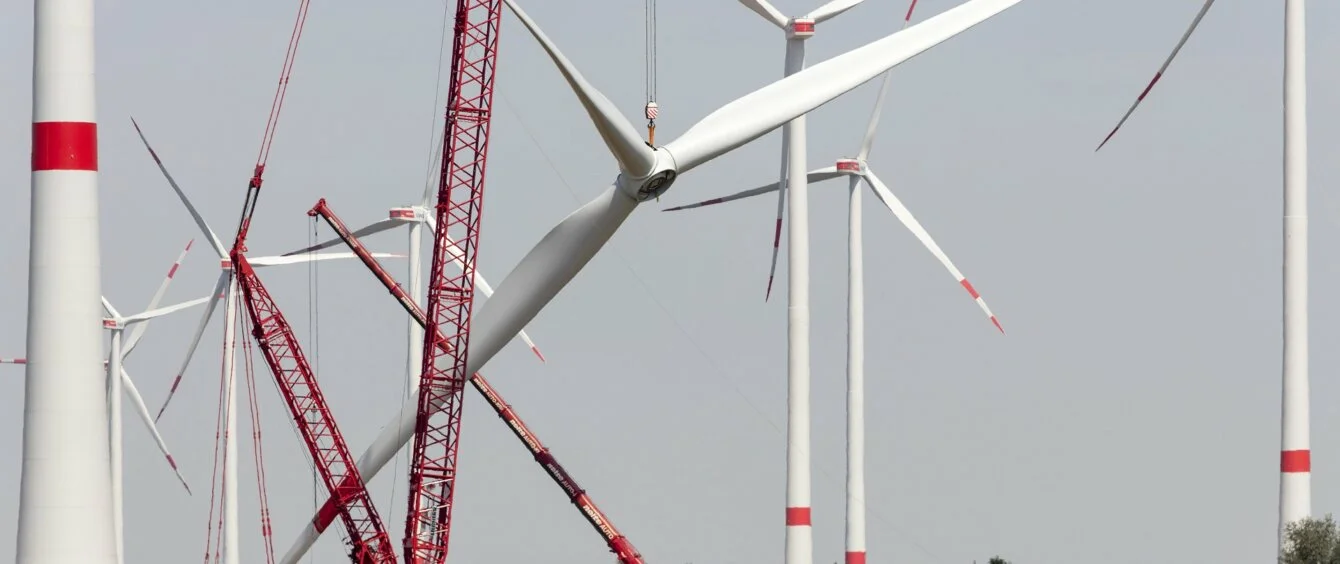Think of a fridge; today’s models are over 50% more efficient than those sold 20 years ago, saving consumers substantial sums on their electricity bills, as well as conserving energy use overall. The end of life of any equipment offers the potential for an upgrade, capturing the technological gains made in the preceding years.
Wind farms are far more complex than a simple fridge, of course, but the principle is the same. Wind technology has evolved hugely since the first commercial farm came into operation in Denmark in 1991, and the opportunities represented by ‘repowering’ – replacing the old turbines with modern models — are truly impressive.
Repowering potential will only rise
Modern wind farms typically last around 20 years, but can last longer in the right circumstances. Eventually, however, the stresses and strains they experience fatigues components and materials. The options towards end of life are to extend permits for operation for a limited time (usually with rising maintenance costs), repower or lose valuable clean energy generation altogether.
The volume of repowering opportunities is rising quickly. 20 years ago, in 2002, Europe installed almost 6 GW of new wind power. Annual deployment rates have more than doubled since then, so the repowering opportunities will keep on growing. According to industry body WindEurope, 14 GW of Europe’s wind farms have been running for 20 years or more. By 2030, this will have increased to 78 GW.
Multiple benefits on offer
Wind developers naturally targeted the best wind sites first. The result now is that the oldest wind turbines are on the best sites, which only serves to increase the benefits of repowering.
WindEurope says that new data shows, on average, that repowering cuts the number of turbines on a wind farm by a quarter and results in a tripling of electrical generation, as well as reducing maintenance costs. These are extraordinary gains.
Moreover, fewer turbines have less environmental and visual impact and are less mineral intensive in terms of construction. Repowering also allows companies to rethink the original wind farm design, for example to site fewer, quieter, modern turbines further from residential homes.
A good example is RWE repowering of the Krusemark-Ellingen wind farm in Saxony-Anhalt, Germany. Originally built between 1998 and 2004, it consisted of 15 wind turbines with total capacity of 15.7 MW. Now the site has a total installed capacity of 19.8 MW. With this repowering, RWE was able to significantly increase electricity production at the site. This should result in an even larger jump in output, as the new turbines are more efficient and have wider operational parameters.
Another important factor is the growing ability to recycle wind turbines.
90% of a wind turbine is already fully recyclable, according to WindEurope. The stumbling block for the remaining 10% is the blades, but gains are being made here too.
In August 2022, RWE installed the world’s first fully-recyclable offshore wind blades, developed by Siemens Gamesa, at its new 342-MW Kaskasi offshore wind farm in Germany. And the company recently announced that its UK flagship offshore wind project Sofia, in construction off the North East coast, has signed an agreement with Siemens Gamesa to deploy recyclable blades on 44 of its 100 turbines.
Repowering offers the opportunity to replace old turbines with more recyclable ones, moving the wind industry ever closer to complete life-cycle sustainability.
Permitting holding back repowering projects
Speeding up permitting for repowering projects is essential, if the most is to be made of the opportunity and wind farm closures avoided.
WindEurope notes big differences in the performance of different countries. Of the 170 wind farms that have been repowered in Europe, more than half are in Germany. The Netherlands is currently repowering the most, but other countries need more coherent strategies to boost repowering rates, the association says.
A new paragraph in Germany’s Federal Immission Control Act, which came into force in August 2021, aims to make permitting easier for repowering, supporting the country’s existing progress in this area. In addition, new EU emergency regulations have been agreed in principle, which aim to speed up permitting from one year to three months for repowering projects that increase capacity by up to 15% and do not need additional grid strengthening.
Overall, studies suggest that the increase in generation from repowering would make a substantial contribution to meeting the EU’s wind capacity targets, and would do so from sites where wind farms are already in operation.
